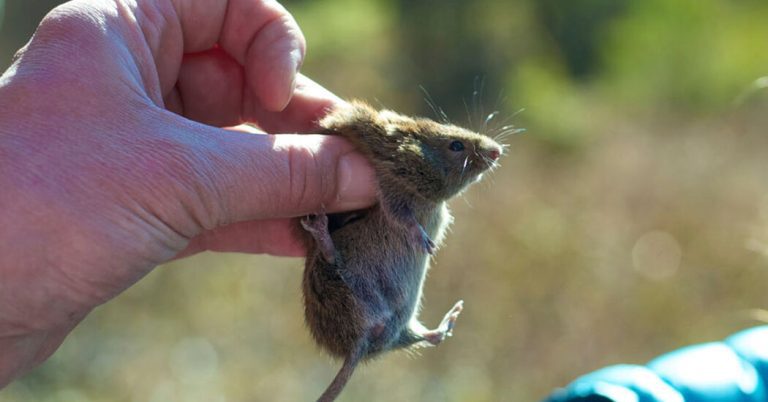An Alaska man died last month from Alaskapox, a rare virus that occurs mostly in small mammals and can cause skin lesions, according to state health officials.
Alaskapox was first identified in 2015 in a woman living near Fairbanks, Alaska, and a total of seven cases of the virus have been reported to the Alaska Department of Epidemiology. As of last month, no one had been hospitalized or died from Alaska, which can also cause swollen lymph nodes and muscle or joint pain, Alaska epidemiology officials said Friday.
Of the seven people who contracted Alaskapox, six lived in the Fairbanks North Star Borough, where they were found to have the redback and musculature virus, according to the Alaska Department of Health. Alaskapox has not been found to spread between humans.
Dr. Julia Rogers, an epidemiologist at the Centers for Disease Control and Prevention, said in an interview Tuesday that symptoms from the Alaskapox infection were generally mild.
“There could have been cases in the past that we just didn’t catch because of this,” Dr. Rogers said, adding that it’s possible that recorded cases will increase as more doctors learn how to recognize them.
The Alaska Department of Epidemiology, which has not released the name of the man who died from the virus, said in a statement that he was “an elderly man from the Kenai Peninsula with a history of drug-induced immunosuppression.”
Alaska health officials said it was not yet clear how the man contracted the virus. The man lived alone in a wooded area, had not traveled recently or had close contact with someone who had recently traveled, according to the state health department.
The man told doctors he was taking care of a stray cat at his home and that the cat had scratched him frequently, including once near his right armpit, about a month before he noticed a red papule had formed there September 2023 health in Alaska the officials said. The cat was later tested for other orthopoxviruses and all tests were negative, according to the Department of Health. However, health officials said it was possible that the stray cat was the source of the virus.
Dr Rogers said it was possible the stray cat’s claws could carry the virus from scratching around other rodents.
“But we can’t say for sure how that particular mode of transmission happened with this patient or the previous patients,” Dr. Rogers said.
Dr. Joe McLaughlin, Alaska’s state epidemiologist and head of the Alaska Division of Epidemiology, said in an interview that all of the patients who had Alaska pox had a cat or a dog, and that health officials are working to determine what the role of pets play in the spread of the virus.
“Because Alaskapox is rare, our No. 1 message is that Alaskans should not be overly concerned about this virus,” Dr. McLaughlin said, “but more aware.”
In the six weeks after the man noticed the lesion, he went to his primary care doctor and the local emergency department several times because of the lesion, according to the Department of Health. He was prescribed several rounds of antibiotics, which did not help, health officials said.
The man was hospitalized Nov. 17 because the damage had affected his ability to move his arm and was later transferred to a hospital in nearby Anchorage, health officials said. While being treated there, the man said he felt “burning pain” and four small lesions resembling smallpox were found on his body, health officials said.
After a series of tests, health officials said, doctors were able to rule out cowpox, mpox and other viruses. A swab of the man’s lesion was later sent to the Centers for Disease Control and Prevention, which found it was consistent with other Alaskan cases, according to health officials.
While the man was hospitalized, health officials said, he began to develop wounds that took a long time to heal, malnutrition, acute kidney failure and respiratory failure. He died at the end of January, the Ministry of Health announced.
Dr. McLaughlin said that because people who are immunocompromised have had worse symptoms with other orthopoxviruses, it’s important for doctors in Alaska to diagnose Alaska early.




